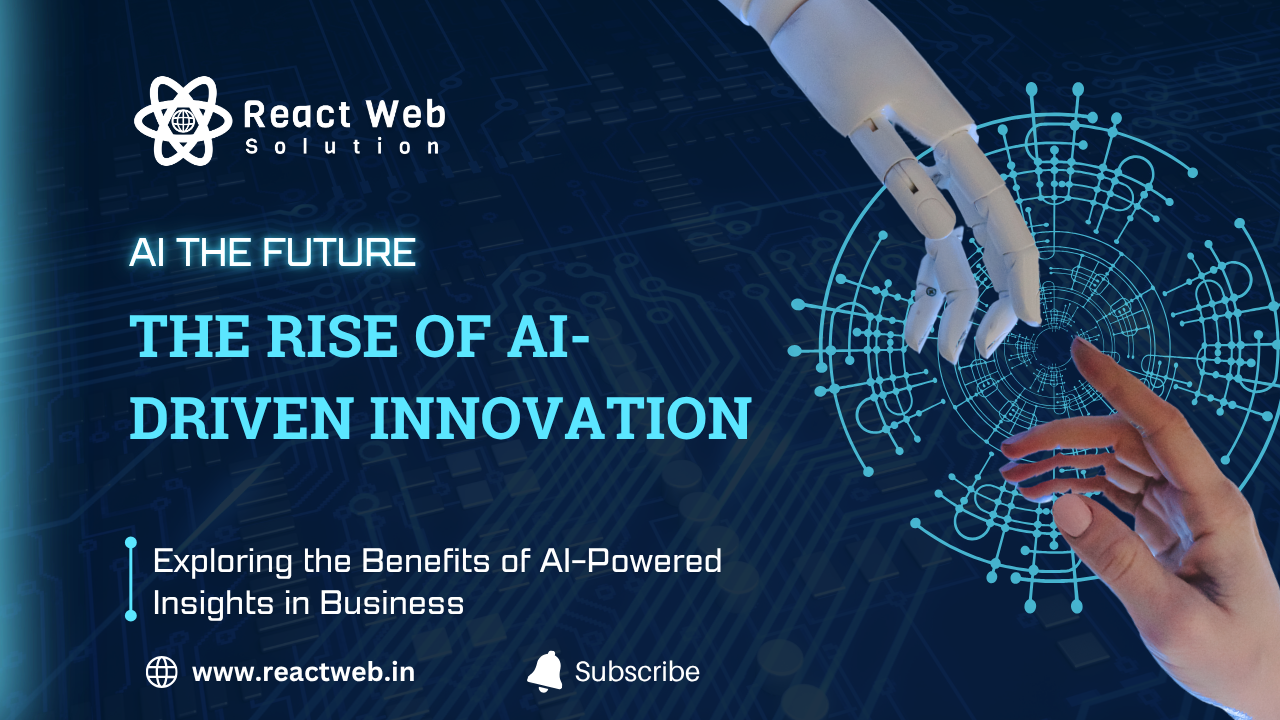
In 2025, the web development is undergoing an earthquake change by advanced in Artificial Intelligence. From automated code generation to individual user experiences, AI is no longer a future concept - it is an essential toolkit for modern developers and businesses seeking competitive benefits. This article explains how AI-powered innovation web development is re-shaping every stage of the life cycle, which brings profit, and the teams of challenges have to navigate to exploit their full potential.
Intelligent
wireframing: AI -run equipment can now explain the brief of the natural
language to generate wireframe within minutes. Instead of sketching the layout
by hand, the designers describe their vision, and produce a clickable prototype
designed for the AI review.
Automatic
Style Guide: Machine Learning algorithms analyze existing brand assets- logos,
color straps, typography- and automatically construct constant styling guides.
This design cuts from phase to days and aligns each page with corporate
identity.
Predictive UX Test: AI-operated analytics platforms follow user interactions to identify possible purposeful issues before the development begins. By predicting pain points, teams can continuously adapt to navigation flow and page layout.
Natural
Language Coding: In 2025, developers regularly use AI assistants to translate
plain-English signals into the production-cod snipet. Whether a custom form
verification or a complex animation sequence is formed, AI speeds up to
50%coding.
Performance
tuning: Machine learning models monitor the performance of the real-world site
and recommend adaptation-like image compression levels, cashing strategies, and
lazy olds loading thresholds to ensure the page load in less than two seconds.
Dynamic
Content Generation: AI algorithms analyze user's behavior, preferences and
demographics, which are to generate personal headlines, product recommendations
and even the entire page layout on the fly. This level of adaptation greatly
increases engagement and conversion rates.
Chatbots
and Virtual Assistant: Interactive AI directly handles the constrich customer
questions in websites 24/7, handles books appointments, and collects feedback.
With emotion analysis, these bots customize tone and language to match each
visitor, causing a human experience on a scale.
Adaptive interface: using real-time data, AI UI can adjust the components-such as button size, contrast ratio and content conforming with density-individual requirements, including access requirements. This ensures inclusion without separate growth track.
Devops
automation: AI-powered pipeline orchestrate tests, security scans and
deployment in many environment. Continuous integration triggers reduce
discrepancies, downtime and manual intervention found during automatic
rollbacks or therapeutic scripts.
API
Orchitation: As microsarvis architecture, AI platforms manage dependence
graphs, automatically update the service closing points and monitor health
check -ups. This ensures that the front-end application always optimal back.
End connect with resources.
Cloud
Resource Adaptation: Machine learning models predict traffic spikes and
provisions server -free functions or container institutes. This reduces the
cost just the time by maintaining extreme performance in the scalability.
Intelligent
Threat Detection: AI systems analyze millions of logs per second to identify
unusual patterns - such as DDOS attacks or credentials stuffing - often prevent
violations before impressing users.
Automatic
Code Auditing: Safety-focused AI tools scan new committees for weaknesses such
as SQL injection or cross-site scripting (XSS). They destroy issues in bridge
requests and even suggest remade codes, which spend time security teams on
manual reviews.
Regulatory
Compliance Monitoring: For industries under GDPR, HIPAA, or other rules, AI
monitors data flow and configuration, automatically generates audit reports and
alerts teams to non -use changes.
While
AI provides transformational benefits, it requires careful planning to adopt it
effectively:
Data
privacy: comprehensive user data collection fuel privatization engine.
Organizations should apply strict data governance policies, anonymity protocols
and clear opts in mechanisms.
Prejudice
mitigation: Trained AI model materials on diagonally dataset can eliminate bias
in recommendations or code tips. Regular bias audit and diverse training data
are essential safety measures.
Skill
Development: Teams must be excusable to work with AI tools - how to validate
early engineering, model boundaries, and AI output.
Ethical
Uses: Transparent AI use produces the user trust. Websites should disclose AI -
Povered features (eg, chatbots, personalization) and provide an option of human
fall.
As
we move towards the end of 2025, AI's role in web development will only
increase. Future innovations can be involved:
Generative
3D web experience: Beyond the flat page, AI can automate the creation of an
immersive 3D interface that immediately load in browsers.
Emotion
Inters Conscious Interface: Detection of real Ootion through webcam can cause
material tone and visual to fit the user's mood.
Self
-Heling website: Advanced AI agents can autonomally break up link, patch safety
holes, and update the leveled libraries without human intervention.
AI-run
innovation is redefining web development in 2025. From automatic to automatic
tasks to craft the hyper onsoursalized user trips, the artificial intelligence
empowers the teams to rapidly, intelligent, intelligent and distribute more
secure websites. By embracing AI responsibly - promoting privacy, morality and
continuous learning - the development team can unlock new levels of creativity
and efficiency, puts their businesses at the forefront of digital frontier.